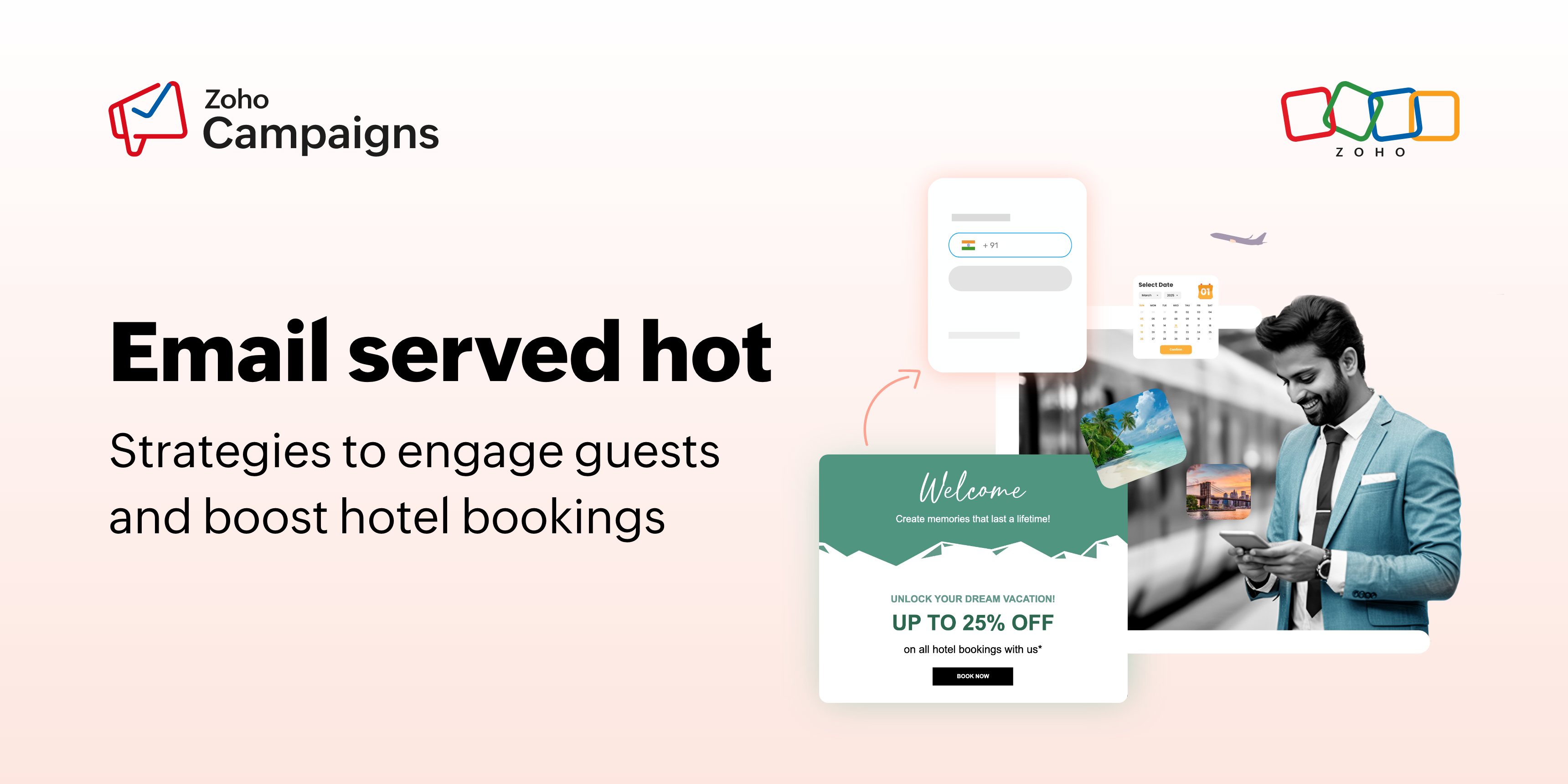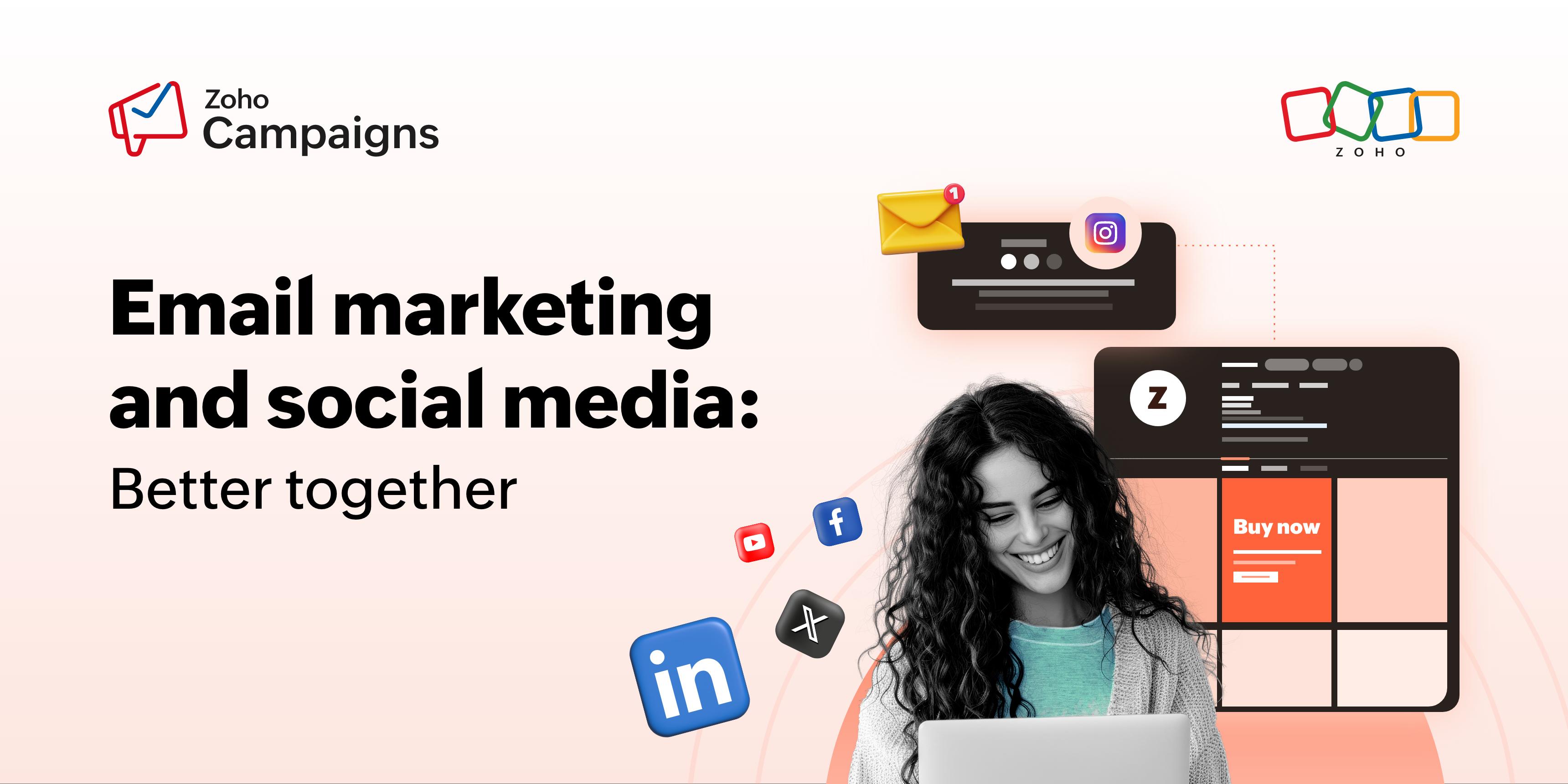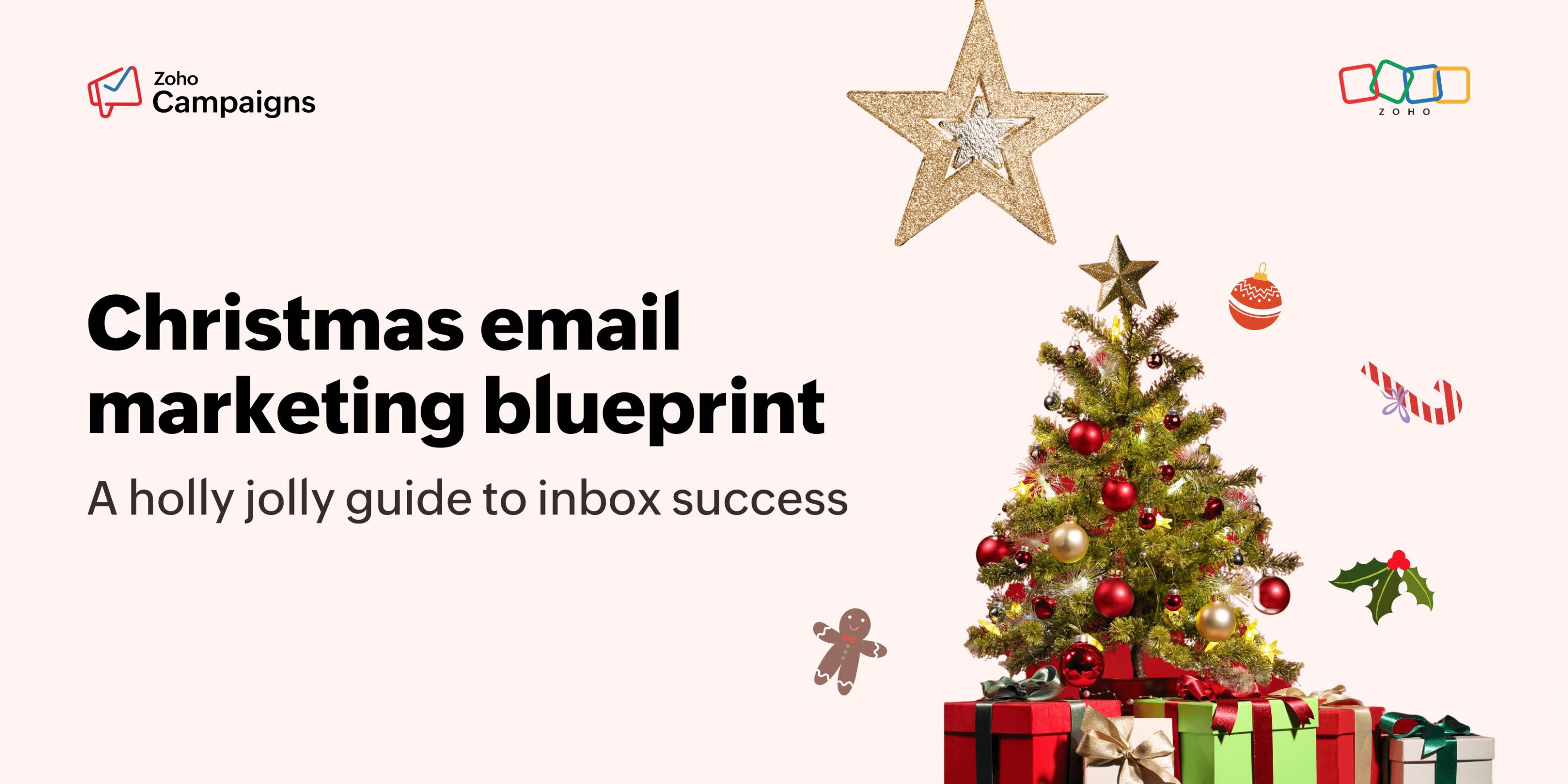- HOME
- Email Marketing
- Email marketing decoded: Exploring different email types for success
Email marketing decoded: Exploring different email types for success
- Last Updated : January 5, 2024
- 193 Views
- 6 Min Read

Email marketing will always remain a critical component of digital marketing strategies. Its ability to connect with audiences on a personal level, nurture leads, and drive conversions makes it an indispensable tool for businesses. It's essential to understand the various types of emails available in email marketing and use them effectively to get maximum results.
In this blog, we will explore the diverse landscape of email marketing and shed light on the types of emails that can help you build and maintain meaningful relationships with your subscribers.
From welcome emails to abandoned cart reminders, it becomes easier to craft effective emails if we have clarity on the purpose of the mail. By the end of this blog, you'll have a clear understanding of how to craft compelling email campaigns that resonate with your audience and drive results.

1. Welcome Emails
Your welcome email is where the magic begins. It’s where you start turning users into fans. You not only express gratitude for their choice but also introduce them to your world. Your mail acts like the friendly guide showing them around, offering useful tips, and possibly a welcome perk to get them started. Keep it friendly, keep it professional, and most importantly, make it memorable!
Best Practices for welcome emails:
- Express gratitude and enthusiasm for the subscriber's interest.
- Set clear expectations for what subscribers can expect from your emails.
- Include a brief introduction to your brand and its values.
- Encourage engagement, such as social media follows or exploring your website.
- Consider offering a welcome discount or incentive to encourage a first purchase.
We have covered all the nitty-gritty of Welcome emails in this expansive blog.
2. Promotional emails
Promotional emails are designed to drive sales or conversions by promoting specific products, services, or offers. They are essential for generating revenue and attracting repeat customers.
How to craft engaging promotional emails:
- Create compelling subject lines and email content.
- Use persuasive visuals, including high-quality images and videos.
- Highlight the unique selling points (USPs) of your products or services.
- Include a clear call to action (CTA) and a sense of urgency (e.g., limited-time offers).
- Segment your audience to send relevant promotions to specific groups.
Tip: Experiment with different elements of your promotional emails, such as subject lines, visuals, CTAs, and timing, to identify what resonates most with your audience. A/B testing helps optimize your campaigns for better results.
3. Transactional emails
Transactional emails are triggered by specific actions or events, such as purchases, registrations, or password resets. Check out ZeptoMail, Zoho's very own transactional email platform with the right integrations to make your financial transactions a cakewalk.
4. Newsletter emails
Newsletter emails are regular communications sent to subscribers to share valuable content, updates, and news. They help build brand loyalty and keep your audience engaged.
How to create compelling newsletter content:
- Plan a content calendar to maintain consistency.
- Provide valuable and relevant information, such as industry insights, how-to guides, or customer stories.
- Segment your subscriber list to send tailored newsletters to different groups.
- Use eye-catching visuals and well-structured layouts.
- Encourage social sharing and feedback to boost engagement.
Tip: Personalize newsletters by including the recipient's name and tailoring content to their interests and preferences. Use data analytics to identify what types of content resonate most with different segments of your audience.
5. Educational emails
Educational emails are designed to inform, educate, and nurture leads or customers. They position your brand as an authority in your industry and help build trust.
How to craft effective educational email campaigns:
- Provide valuable and informative content that addresses your audience's pain points.
- Use storytelling to engage readers and make complex topics more accessible.
- Include relevant visuals, such as infographics or videos.
- Offer resources for further learning, such as ebooks, webinars, or guides.
- Use email automation to send a series of educational emails that guide recipients through a learning journey.
Tip: Monitor open rates, click-through rates, and conversion rates for educational emails. Additionally, track metrics related to resource downloads, webinar registrations, or other actions that indicate engagement with the educational content.
6. Abandoned cart emails
Abandoned cart emails are sent to users who have added products to their cart but have not completed the purchase. They aim to recover lost sales and reduce cart abandonment rates.
How to write persuasive abandoned cart emails:
- Remind customers of the items left in their cart.
- Highlight the benefits of the products and any discounts or promotions.
- Include a prominent CTA to encourage completing the purchase.
- Add customer reviews or testimonials for social proof.
- Offer assistance through customer support or a live chat option.
Tip: Send the first abandoned cart email shortly after the abandonment, typically within a few hours. Follow up with a series of emails over a few days, adjusting the messaging and incentives in each one. Be cautious not to overwhelm recipients.
7. Re-engagement emails
Re-engagement emails are sent to inactive subscribers with the goal of reigniting their interest in your brand. They can help clean your email list and improve deliverability.
How to design successful re-engagement campaigns:
- Use compelling subject lines to grab the recipient's attention.
- Remind subscribers of the value they've received in the past.
- Offer incentives or promotions to encourage reengagement.
- Include a clear CTA, such as "Click to stay subscribed."
- Set up automation to remove subscribers who do not respond to reengagement emails.
Tip: Monitor engagement metrics, such as open and click-through rates, to assess the effectiveness of your reengagement emails. Successful reengagement campaigns can lead to more active and responsive subscribers.
8. Feedback and survey emails
Feedback and survey emails are sent to collect valuable insights from your audience, helping you understand their preferences and improve your products or services.
How to create engaging surveys:
- Keep surveys concise and easy to complete.
- Clearly state the purpose of the survey and its importance.
- Offer incentives, such as discounts or entry into a giveaway, to encourage participation.
- Send follow-up emails to thank participants and share the results or improvements made based on their feedback.
Tip: Analyzing and Applying Feedback: Use the feedback gathered from surveys to make data-driven decisions. Address issues or concerns raised by customers and communicate how their input has influenced positive changes in your business.
9. Birthday and anniversary emails
Birthday and anniversary emails are personalized messages sent to subscribers on their special occasions. They help build emotional connections and foster customer loyalty.
What to consider while sending birthday and anniversary emails:
Personalization and special Offers: Include the recipient's name and a heartfelt birthday or anniversary message. Consider offering a special discount or gift as a token of appreciation.
Customer Retention Through Celebration: Celebrating milestones with your customers reinforces the idea that you value their relationship beyond transactions. These emails can lead to increased customer retention and advocacy.
10. Event Invitation Emails
Event invitation emails are sent to promote webinars, workshops, product launches, or physical events. They help generate interest and registrations.
How to craft event invitation emails:
- Create visually appealing invitations with event details, including date, time, location, and agenda.
- Use persuasive language to convey the value of attending.
- Include clear registration or RSVP buttons.
- Send reminder emails leading up to the event to boost attendance.
Tip: Engage recipients before, during, and after the event. Provide valuable content or insights related to the event's theme to keep participants engaged.
11. Cross-sell and upsell emails
Cross-sell and upsell emails aim to increase the average order value by suggesting complementary or upgraded products or services to existing customers.
Strategies for Cross-Selling and Upselling:
- Analyze customer purchase history to identify relevant cross-sell and upsell opportunities.
- Highlight the benefits and value of the recommended products.
- Use personalized recommendations based on the customer's preferences and browsing behavior.
- Offer bundle deals or exclusive discounts for bundled purchases.
Tip: Track the conversion rates and revenue generated from cross-sell and upsell campaigns. Monitor customer feedback and adjust your strategies accordingly.
12. Drip Email Campaigns
Drip email campaigns are automated series of emails that are sent at specific intervals to nurture leads or guide customers through a predefined journey.
How to develop effective drip campaigns:
- Plan the content sequence to align with the recipient's journey or goals.
- Set up triggers based on user actions, such as sign-ups or abandoned carts.
- Include a clear CTA in each email to move the recipient to the next stage.
- Monitor the performance of your drip campaigns and make adjustments based on engagement and conversion data.
Tip: Automation tools make it easy to create and manage drip campaigns. This allows you to deliver timely and relevant messages to your audience without manual intervention.
Conclusion
In the ever-evolving landscape of email marketing, understanding the diverse types of emails and how to leverage them effectively is essential for success. Whether you're nurturing new leads with welcome emails, boosting sales with promotional emails, or reengaging dormant subscribers, each type of email serves a unique purpose in your marketing strategy.












